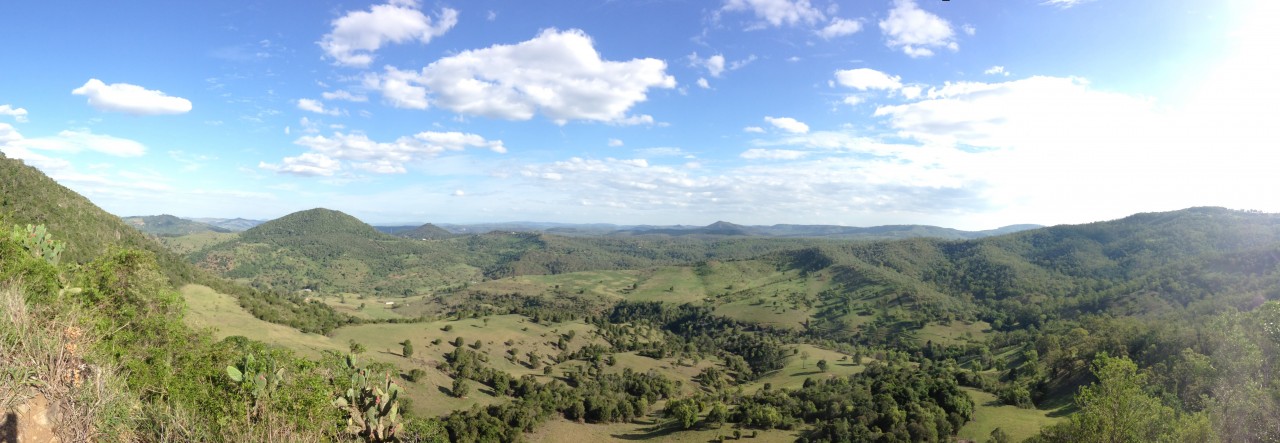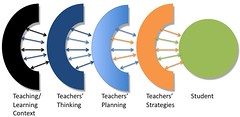This is a work in progress
A couple of weeks ago I attended the 2007 Carrick Awards Forum at RMIT on behalf of CQU. The main aims in attending, at least from my perspective, included getting a better “feel for Carrick” and forming some ideas about how CQU can be more successful in having staff receive these rewards.
In summary, the main points I took away included:
- The vast majority of the award winners won because of their internal drive and motivation to be good teachers. Most had been doing what they were doing for years.
- They generally had only limited assistance from the university teaching and learning support structures (much of the total support they did receive came in the form of assistance in writing the Carrick nomination).
- A number of the presenters told stories about how they had to actively ignore, bypass or battle existing university policy, structures or technology.
- None of the work I saw was based on any brand new insight into learning and teaching. All of it was based on well-known principles.
- However, all those well-known principles were made truly effective through how the individual award winners adopted and adapted the principles to suit their own context and, often, their own unique personalities.
What follows are some thoughts on short and mid/long term strategies, which might be useful for CQU. Some are specific strategies for CD&DU.
First, a disclaimer, I believe this is an example of a wicked design problem (Rittel and Webber, 1973). There is no one silver bullet, or even a small number. There are no objective or definitive measures to determine if one approach is “best”, or often even better than others. Any change, no matter how small, is going to have effects. Some of these will create entirely unexpected results, either positive or negative.
Short term
Set the bar high
Where applicable (i.e. probably not early career), only staff who can demonstrate a consistent, on-going interest in good learning and teaching should be considered and generally only if there is something unique which sets them off.
The same perhaps should be applied to the CQU L&T awards. If it becomes that case that anyone can get one, it would soon tarnish the image.
Consider the impact of CQU’s context
All of the presenters I saw (maybe there were some I didn’t see that were different) at the Carrick awards forum were teaching in a context that applied at CQU in the early 90s. There was generally a single academic or a small team. These people had essentially total responsibility for a course, or small sequence of courses, for a consistent time period. They had problems to solve and the time and responsibility to solve them.
This is, in my experience over the last 5 year not the context many CQU academics find themselves in. A huge number of factors significantly restrict the innovation (and the quality) which a proportion of CQU coordinators can undertake. These factors include: ESOS requirements that all international students meet face-to-face (somewhat lifted in recent times), the majority of students being the direct responsibility of a number of other staff (the last course I taught had 250+ students, I was directly teaching 8), the need to coordinate upwards of 20 other staff, many of those staff being casual tutors paid according to traditional expectations and little or not ability to change this model, and perhaps the most important the sheer complexity of delivering these courses being extremely difficulty and making individuals and the organization significantly risk adverse in terms of changing models.
These and many other factors make it incredibly difficult for a significant proportion of CQU staff to do anything like the approaches shown at the Carrick awards forum.
There are other universities with similar contexts and issues. The apparent absence of any of their staff as Carrick award winners seems to indicate that CQU isn’t the only university having trouble dealing with these issues.
Some of the tactics which might alleviate some of these factors include
- The existence of a process that allows the proposal, implementation and evaluation of significant innovations in large, complex courses involving the AICs.
- Different models of ownership of courses and involvement of all teaching staff associated with courses in development, delivery and evaluation.
Examine the Bulmer Fellowship
Dr Michael Bulmer, a statistician from UQ, announced he’d received a Carrick associate fellowship to look at automated assessment of reflective journals. Essentially, approaches to allow students in large classes to maintain individual reflective journals that would enable academic staff to keep on eye on the student without the need for large amounts of manual marking. One of the solutions to this problem is the use of textual analysis software like Leximancer.
This has interesting connections with the BAM project which is slowly increasing in use at CQU (use in the 2nd half of 2007 may reach 3 or 4 courses).
Long Term
For ideas around what can be done long term I’m going to fall back onto the Trigwell model (2001) shown below.

If our aim is to improve the strategies teachers’ are using and hence the quality of the learning and teaching then we have to implement strategies that encourage the improvement of the context, teachers’ thinking and their planning.
Teaching/Learning Context
There are broad range of fundamental holes, inefficiencies, problems and scope for improvement within the teaching/learning context. Some of these are long term issues specific to teaching and learning, some are more recent and have more to do with the University and its general direction.
Some initial, far from exhaustive thoughts on potential actions follow. Obviously what is on the list is limited by my current time and my current problems/issues. Will work on this list over time.
- ITD, DTLS and the faculties need to work more collaboratively and effectively on a range of projects targeted at specific academic needs.
e.g. making the course profile process simpler and more efficient, marking copy detection for plagiarism easier etc.
- Change to the learning context not based in a demonstrable, direct need of academics or students need to be minimised.
e.g. dropping both Webfuse and Blackboard and adopting Moodle could not be demonstrated as in response to a direct need for academics and staff. It would be for perceived needs of the “organisation”.
Teacher’s thinking
- Targeted invitations to Carrick award winners to specific CoPs.
Based on the assumption that you can only change practice by addressing the teachers conception of their identity. Bring in award winners which match the “identity” of various groups. Aim to maximise the homphily of the award winner and the CoP
- DTLS/Faculty fellowships
Implement short-term fellowships which bring faculty folk down to DTLS for specific (usually faculty-based) projects. The aim being to develop more connections between DTLS and the faculties.
- What are they thinking?
Perform research into what faculty are thinking now. What are their problems? Use this to inform changes to the teaching/learning context. Use it as a basis for longitudinal research to measure over time what is done.
Teachers’ planning
- Reworked REACT process that encourages the use of a CoP based approach for the planning/design of a course.
i.e. rather than have academics plan out a course by themselves, with little or no interaction with others. Modify the REACT process to act as a CoP based approach to course design. It might work something like this
- Identify a collection of 6-12 academics from diverse disciplines and background who are developing a course for offering in a given term.
- Combine them with selection of learning designers, various technical people (e.g. video production/streaming) and perhaps the odd invited guest
- There would a fixed sequence of gatherings (perhaps half days) at which the CoP would share insights and plans.
The sequence might be based around the ADDIE process or something similar.
This, would hopefully, open up the diversity of input the teacher receives during the planning process for a course, establish connections across disciplines, and potentially provide a more cost effective approach to learning design than the traditional one (designer) on one (course) approach


